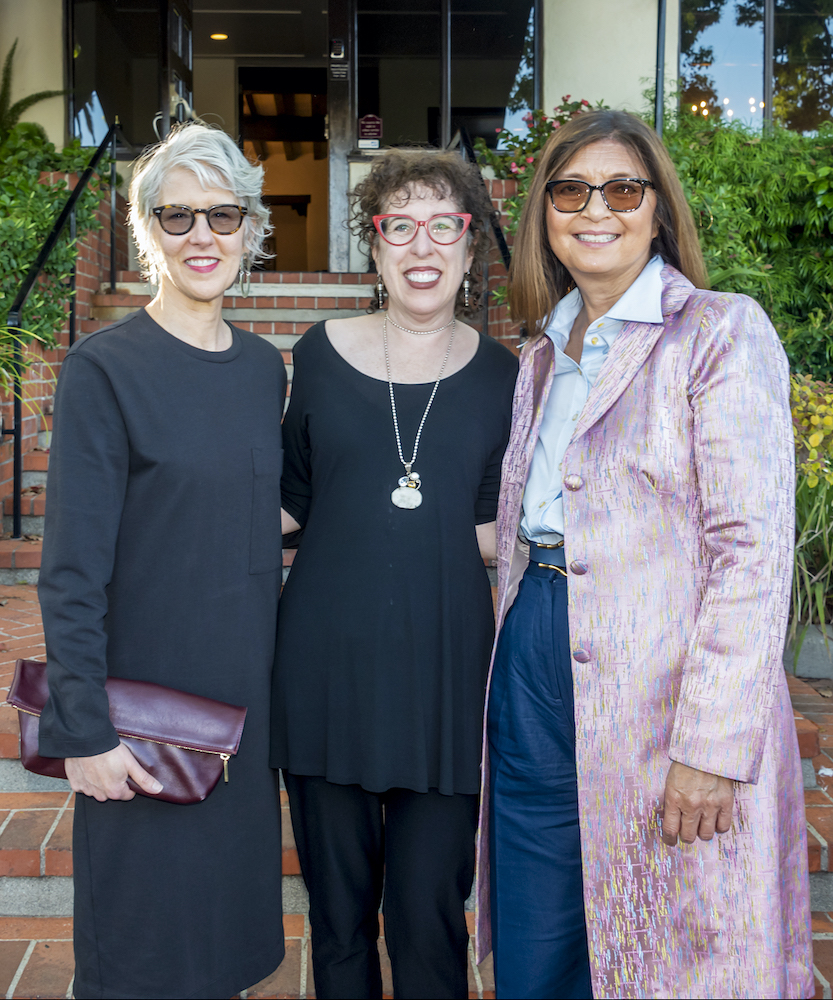Art à la Carte with the SBMA

The Santa Barbara Museum of Art Women’s Board held its second fundraising “Art à la carte” soirée at the University Club.
The SBMA Mercedes Eichholz Director and CEO Amada Cruz, along with the SBMA Women’s Board President Isabel Wendt, welcomed the guests as they arrived at the reception on the outside patio and lawn area.

The program started promptly at 6 pm withWendt and Susan McClain, VP of Development for the SBMA Women’s Board. They welcomed and thanked the guests for their funding support of the board’s events in this, their 74th year. Wendt introduced Cruz who provided her opening remarks. Wendt then presented Cruz with a check for $100,000 raised by the Women’s Board. The funding is earmarked for two upcoming exhibitions: A Legacy of Giving: The Lady Leslie and Lord Paul Ridley-Tree Collection, July 7 – November 3, 2024, on the Ridley-Tree’s gifts of primarily nineteenth-century British and French paintings; and Dario Robleto: The Signal, December 8, 2024 – June 1, 2025, featuring the artist’s feature-length film Ancient Beacons for Long Notice (2024) and a selection of artworks that relate to the history of science and technology.
Guest presenter was Jennifer L. Mass, Ph.D. She is the President and Founder of Scientific Analysis of Fine Art, LLC, and a Professor of Cultural Heritage Science at Bard Graduate Center. Mass also leads the Scientific Vetting Committee of The European Fine Art Fair (TEFAF) NYC, and is on the advisory boards of The Center for Art Law and the Appraisers Association of America. She explained that her team works with art museums, auction houses, art lawyers, art insurers, artists’ foundations, art investment firms, and law enforcement agencies – including the FBI and Homeland Security – to address questions regarding an object’s attribution, state of preservation, provenance, and mechanisms of degradation. Her current and ongoing projects are several catalogue raisonné committees, intensive research of works from the Barnes Foundation (in particular the Matisse, Cézanne, and Modigliani collections), The Solomon H. Guggenheim Collection, the Nevelson Chapel, (Oslo’s Edvard Munch museum) the Munchmuseet, and the blue period, rose period, and cubist works by Pablo Picasso.

Her full-on lecture highlighted the technical and scientific tools used in the analysis, and what the results can show us when attempting to establish whether a work of art is in its original form, has been restored or augmented, or is a fake. Determining provenance by dating the paints used in a work is not always conclusive, as later restorations can confuse those results. Equipment and techniques employed include X-ray fluorescence mapping – which can determine lead, silicon, and other elements in paint – ultraviolet imaging, and Raman spectroscopy. The diagnostic sampling size required of an artwork’s pigment is 1 milligram to 1 microgram. The established history of colored pigment production can be used to help determine a work’s provenance when no interfering secondary effects are in play. Known pigment timelines include, for instance, Titanium white [1919], Cadmium red [1910], Cadmium yellow [1840], Carbon black [antiquity] and Synthetic ultramarine [1826].
As explained in the lecture, the overriding issues are determining how artists worked, what degradations occurred in the paints used, how artworks are restored, and their conservation managed. For example, paints used prior to WWII had elements of lead, mercury, and arsenic, which were fairly stable, meaning less fading, flaking and so forth. Post WWII, paints were made of dyes which fade over time. Reality hit home when Dr. Mass showed the true paint color of Cadmium yellow that Matisse used and how that paint now appears brown in his works. This is not only a restoration issue, but I couldn’t help but wonder how vibrant his original works were and how they were received by his peers and the art world at that time. The vibrancy of the paint colors he used clearly imbue a new appreciation and interpretation of his works.
While we all would have stayed past midnight to hear more of her lecture, dinner was served. During dessert I went to her table to express appreciation, and mentioned my table had a few questions. We were jazzed that she was able to join my table with Isabel Wendt and Eileen White Read for more talking points. Indeed, Mass’s talk led to a new way of thinking, perceiving, and appreciating the forensic exploration of art works.
Event Committee members were Chair Susan McLean, Stacey Byers, Ann C. Cooluris, Paula Farrington, Tobi Feldman, Deb Joseph, Emiko Kirshman, Pei Shu and Isabel Wendt.
Event sponsors included Laurie McKinley, Berta Binns, Isabeland Paul Wendt, Laura and Geof Wyatt, J. Scott Francis and Susan Gordon of the Francis Family Foundation, Rachel Kaganoff, Phil andEmiko Kirshman, Susan Alesio McLean, Montecito Bank & Trust, and Karen Sweeney and John Alexander.
Funds raised help the Museum bring world-class exhibitions and educational programming to the Santa Barbara community.
411: sbmawb.org





